Anish Kapoor's 'Vagina Sculpture' Vandalized At Versailles
This article originally appeared on artnet News. By Henri Neuendorf,
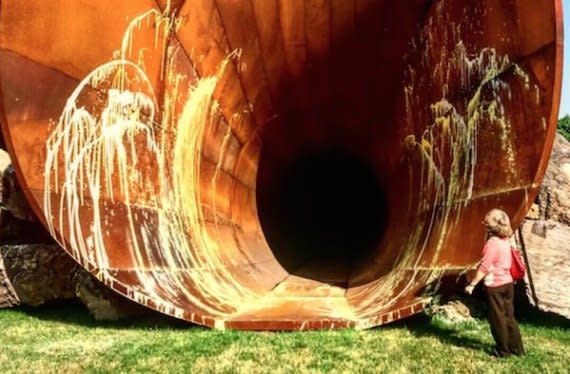
Unknown vandals splattered yellow paint on Kapoor's Dirty Corner (2011). Photo: @ walkergarden via Instagram.
Unknown perpetrators have vandalized Anish Kapoor's controversial sculpture Dirty Corner (2011), installed in the gardens of the Palace of Versailles in Paris, splattering the inside of the conical artwork with yellow paint.
“Damage to the work Dirty Corner was discovered Wednesday morning," the management of Versailles said in a statement, as reported by the Guardian. "It was lightly sprayed with paint. The work is being cleaned."
Love HuffPost? Become a founding member of HuffPost Plus today.
Politicians from the ruling Socialist Party quickly condemned the incident as an attack on free speech. They said it was “unacceptable that art, the compass of freedom, suffer because of the obscurantism of some people."
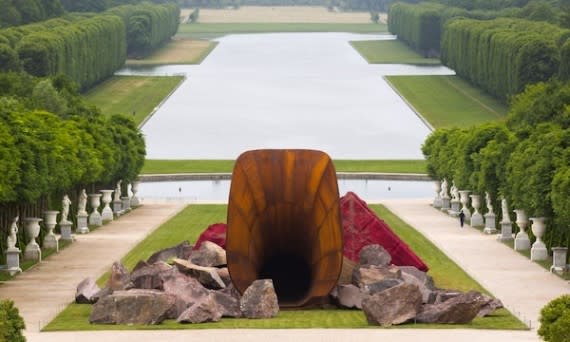
The controversial artwork gained notoriety after the artist reportedly compared it to a vagina. Photo: The Guardian.
Speaking to Le Figaro, Kapoor called the incident a "tragedy" and "extremely sad." The artist said the incident was a "political question" and that the vandals represented "a small fraction of people who have been told that any creative act is an endangerment of a sacred past, revered to the extreme."
The 60-meter flared steel tube, which faces the famous palace, caused a stir after the artist reportedly described it as a symbol of “the vagina of the queen who took power."
The artwork's sexual connotations unleashed a significant backlash from some conservative French commentators, who criticized the inclusion of the piece in such a historically loaded setting.
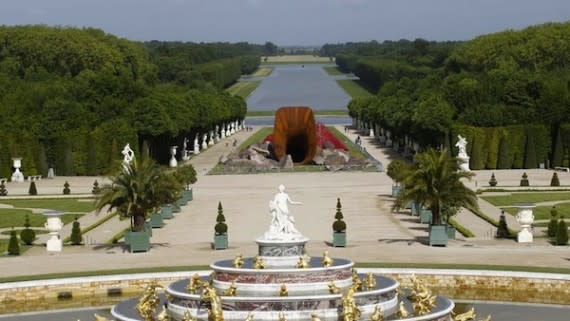
"Dirty Corner", Kapoor's large-scale sculpture at the gardens of Versailles. Photo: Jean-Christope Marmara via Le Figaro.
“I never used the words from which the controversy stemmed," Kapoor told Le Figaro. "I never said 'The Queen. I referred to ‘Her' or ‘She,' to describe a form that could be feminine, lying on the grass like an Egyptian Queen or a Sphinx."
“Labelling Dirty Corner ‘Vagina Queen' is a way to belittle my work, to insult my art, and smear my work," the artist angrily added. “I do not seek provocation, so I categorically refuse the association of Dirty Corner with the openly sexually explicit work of the American artist Paul McCarthy. This comparison is absurd, ridiculous, and malicious."
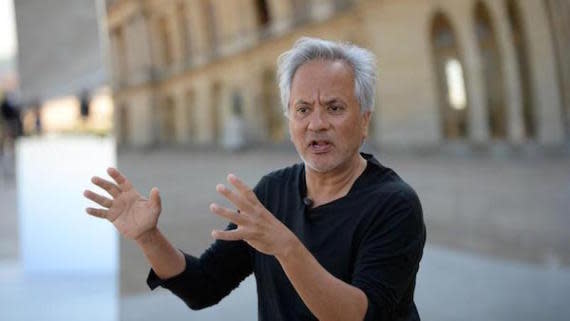
Kapoor reacted angrily to suggestions that his art aims to provoke. Photo: Le Figaro.
The artist, however, tried to look on the bright side, declaring that “blind vandalism proves that the power of art can intrigue minds and move limits […]. The positive thing about this attack is that it highlights the creative force of an inanimate object."
Follow artnet News on Facebook and @henrindf on Twitter.
--------------------------------------------------------------------------------------------------- artnet News is the world’s first global, 24-hour art newswire, dedicated to informing, engaging, and connecting the most avid members of the art community with daily news and expert commentary.
Read More artnet News / Facebook / Twitter / Pinterest / Tumblr
Internet Art: "Pexting" is now a thing.
![Should you like an unbiased third-party opinion of your budding photography skills, Madeline Holden, who runs the site Critique My D*ck Pic, will* deliver**! Promising “100% ANON, NO SIZE SHAMING,” the New Zealander sheds her lawyer alter ego to pass judgment on some of the many, many, many penis portraits sent to her, saying it’s shown her how “fragile” the male ego is. Maybe you wouldn’t guess anyone wielding civilization’s most time-honored symbol of power and dominance might ever feel “fragile” about it. Yet Holden says the blog has been “an anonymous outlet for them to share their deepest vulnerabilities (and to swing their d*cks around).” <br> And, finally, who could forget Snapchat, which has truly democratized penis art, allowing anyone to improve photographs with crude sketches. <br> So that's it. We make penis art, we used to make penis art and, as shown by eighth grader Eliot Ratray on a school trip to a site of 35,000-year-old historic cave drawings, we will always make penis art. <br> "My friend Ian dared me to draw a wiener [on the cave wall] so I did,” said the youth. “I was going to make it peeing but Mrs. Wiser started walking over.” And an artist was born.](https://s.yimg.com/ny/api/res/1.2/ryjq7hu_hB1EoIpmPtPg8w--/YXBwaWQ9aGlnaGxhbmRlcjt3PTk2MA--/https://img.huffingtonpost.com/asset/5bb28065220000bb01db996b.jpg)
And, finally, who could forget Snapchat, which has truly democratized penis art, allowing anyone to improve photographs with crude sketches.
So that's it. We make penis art, we used to make penis art and, as shown by eighth grader Eliot Ratray on a school trip to a site of 35,000-year-old historic cave drawings, we will always make penis art.
"My friend Ian dared me to draw a wiener [on the cave wall] so I did,” said the youth. “I was going to make it peeing but Mrs. Wiser started walking over.” And an artist was born.
The Ancient Greeks: Masters of teeny peen.
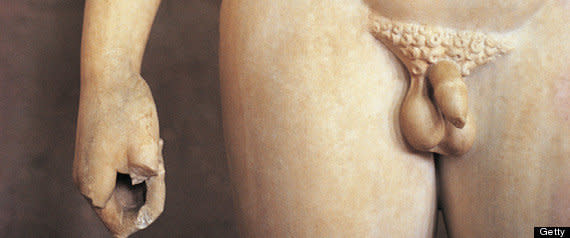
Depictions of penii were common in ancient Greece -- but particularly small ones, which adorn many of the marble sculptures that survive the period. (And yes, we realize "penii" is not the correct declension, but we stand by it because our idea of comedy is indeed stuck in middle school.) Were the men of that time really so poorly endowed? Or did they prefer to feel superior to hunks of marble? Nope. Large penes, actually, were associated with the grotesque. The ideal aesthetic, explained by Aristophanes, was "a gleaming chest, bright skin, broad shoulders, tiny tongue, strong buttocks and a little prick." Ha.
Later, we moved on to…
The Middle Ages: Rivaling that one kid from "Superbad."
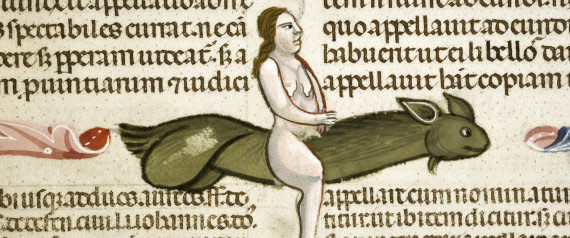
In some contexts, one art historian suggested, such dong drawings existed only for luls. "A tree with phalluses is funny throughout the ages," she explained. And while that’s undeniably true, an alternate interpretation suggests a negative connotation. It’s thought that a Tuscan penis tree mural uncovered ten years ago was all political, commissioned by one Tuscan faction to associate the other with "heresy, sexual perversion, civic strife and witchcraft."
After one too many plagues, we got into…
The Renaissance: Era of erotic snacks.
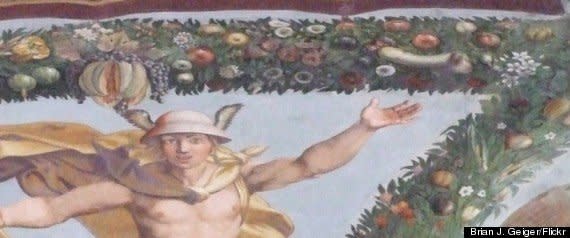
Raphael's "Cupid and Psyche" was a veritable fruit salad of salacity. One corner features a suggestively shaped gourd, with suggestively shaped eggplants at its base, piercing an extra-ripe fig splitting open with juiciness. *Blushes.*
Straight-up male genitalia was also seen -- Michelangelo's "David" is of course one of the Renaissance's most well-known pieces -- but mainly in the context of religious and historical subject matter. It was also still teensy and uncircumcised, because there was a time when people didn't just cut off foreskin (which is probably good, because they might not have realized the importance of sterilizing sharp objects before they come into contact with infant genitals).
Skipping ahead a bit, we run into a…
Scandal in the pre-Raphaelite Brotherhood!!!
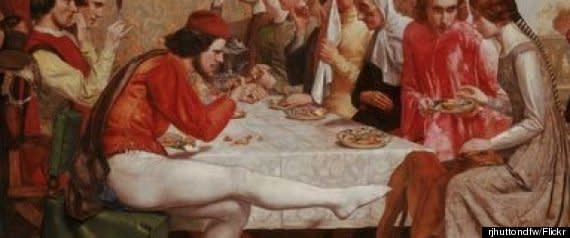
Continuing on, we move into…
The Late 1800s: When art became harder and harder to define.
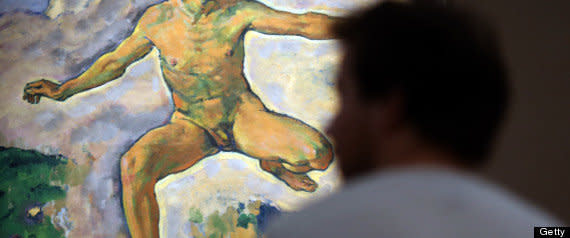
Prior advances in anatomy had begun to influence how art students learned about the human body, too, encouraging them to strive for accuracy. They tried less to recreate Classical proportions (read: teeny peen) than to represent the model’s true figure.
Then, not long after came…
Modernism: Is that...?
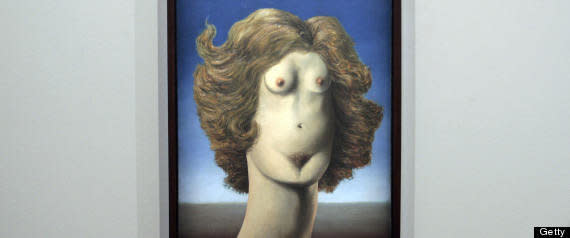
In 1920, Constantin Brancusi scandalized everyone at the Salon de Indépendants when he unveiled a shiny, curved gold sculpture called "Princess X." Supposedly, when Picasso said it looked kind of phallic, Brancusi got all pissy and denied it. But we should note that this was the era of Freud’s whole “subconscious mind” theory that had some artists exploring dreams and symbolism of form. (The subject's long neck in Magritte's "The Rape," above, suggests a phallus piercing its torso-face.) So maybe Brancusi didn’t consciously mean to make a phallic symbol? Maybe? No?
Later, we saw…
Post-Modernism in the mid-1900s: That's a penis.
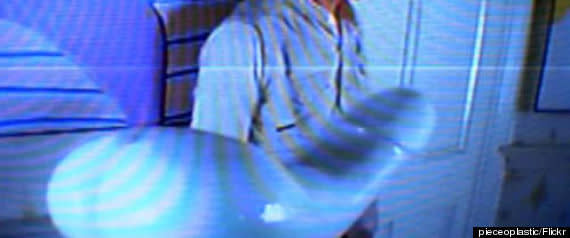
Herman Makkink's fiberglass "Rocking Machine," which bears a clear phallic likeness during its appearance in Kubrick's 1971 "A Clockwork Orange," helped the artist gain notoriety. Drawing on decades' worth of fancy psychoanalysis, Louise Bourgeois coined her slogan, "Art is a guarantee of sanity," and went on to create the monument to reason dubbed "Fillette" -- a giant penis-slash-female-torso. And, among his many representations of household names like Monroe and Campbell, Andy Warhol printed his self-described "dirty art" featuring a dude standing with his legs crossed, fully exposed, and -- and -- full-sized!
Of course there was also Robert Mapplethorpe's "Man in Polyester Suit," famous for delving into LGBT and race issues. It features -- that’s right -- a black man in a polyester suit, with his dongalong casually sticking out of his pants like he forgot about it or something, as one does.
Finally, we arrive at...
Contemporary Art: Male anatomy becomes practically passé.
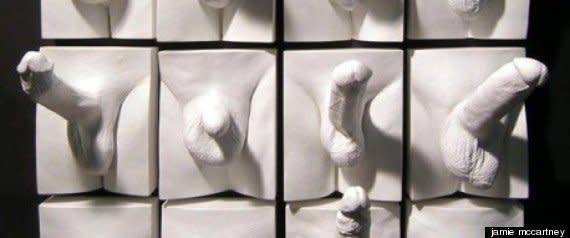
“We don't sit down and say, 'This will piss so-and-so off.’ We make the work we instinctively feel like making,” explained punk artist Sue Weber, who, along with Tim Noble, created a mass of phalluses in the mid-1990s that makes a shadow of the couple’s heads leaning back-to-back when light hits it just so. Fellow sculptor Jamie McCartney cast myriad genitalia -- male and female -- to complete his works, which tile together private parts like the world’s most X-rated backsplashes. McCartney says he uses humor to “break down barriers and encourage public engagement with tricky subjects.” Like their nether regions.
Meanwhile, Kristen Fredericks continues to knit more penile creations down in Australia, where they sprout eyes, hang out in packs and, inexplicably, grow breasts. Fredericks, who definitely looks like somebody’s mom, formerly worked as a knitwear designer before she put her considerable needlework skills to better uses.
But in the Contemporary sphere, there’s also...
Performance Art: Penii in the name of politics.

“It is monumental, heroic, romantic, left-radical, an act of protest,” explained hooligan Aleksei Plutsner-Sarno. “I like it as a piece of work, not just because it is a penis.”
And let’s not forget...
This article originally appeared on HuffPost.

